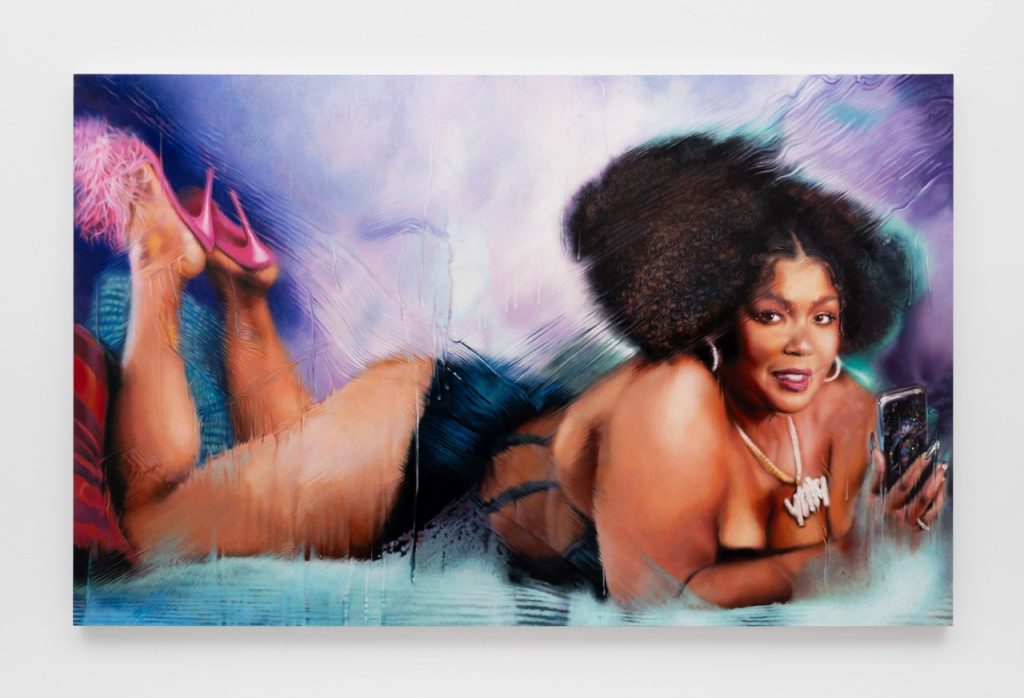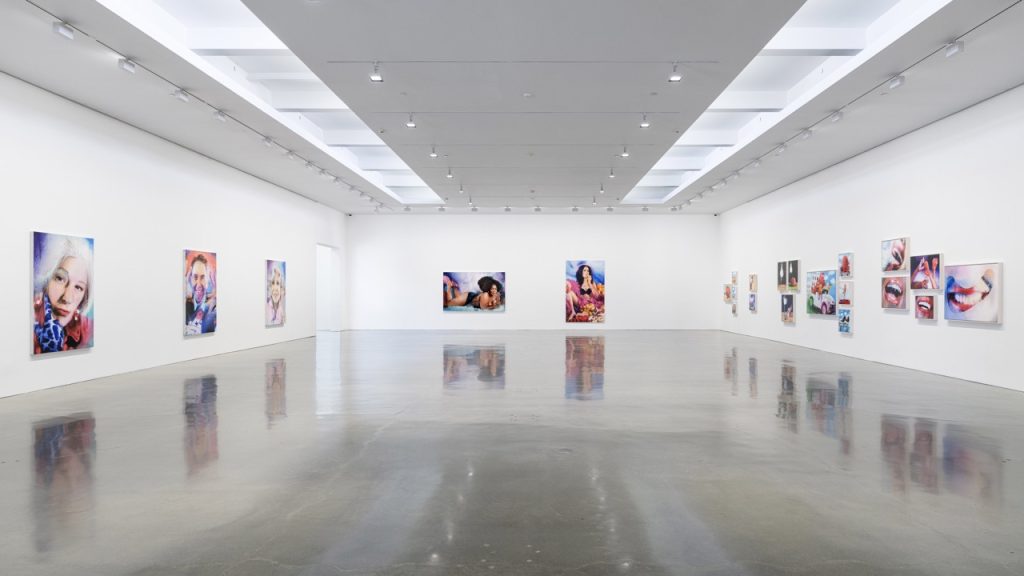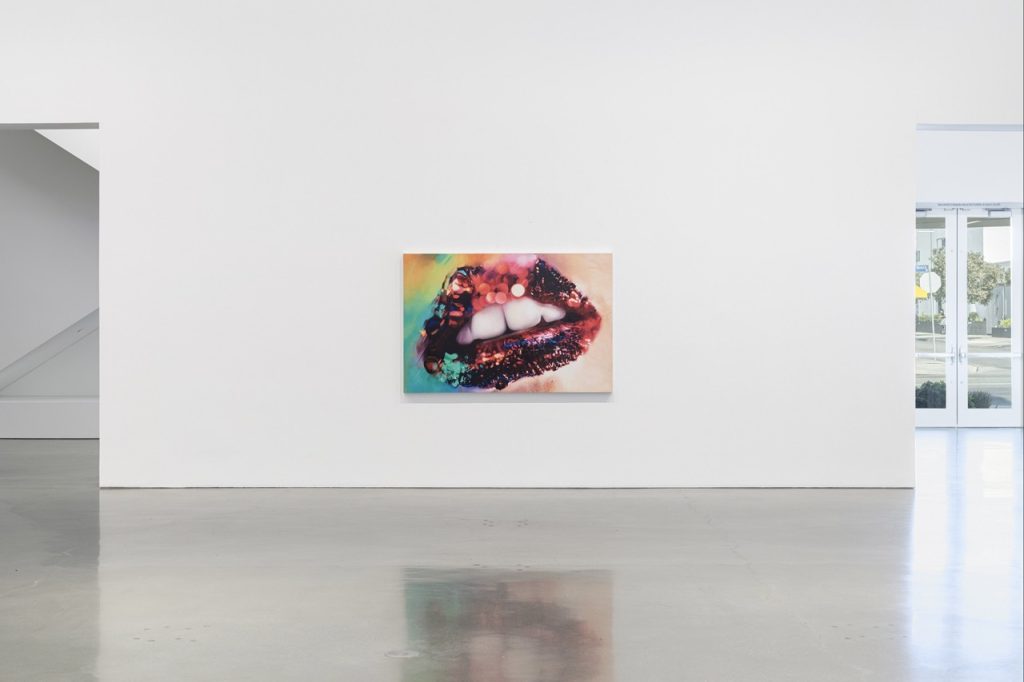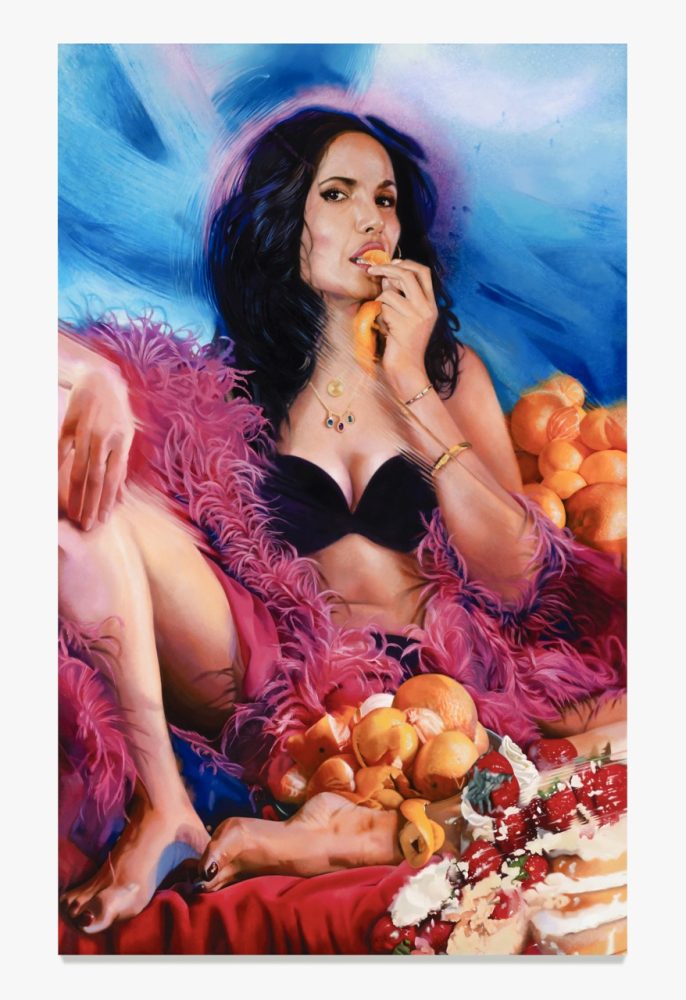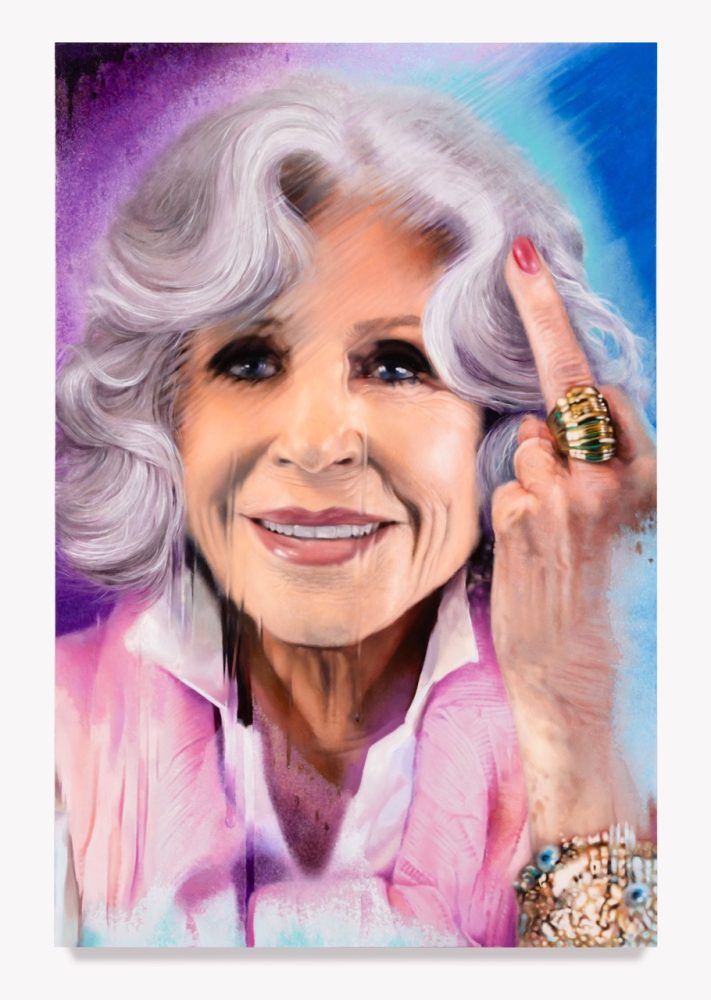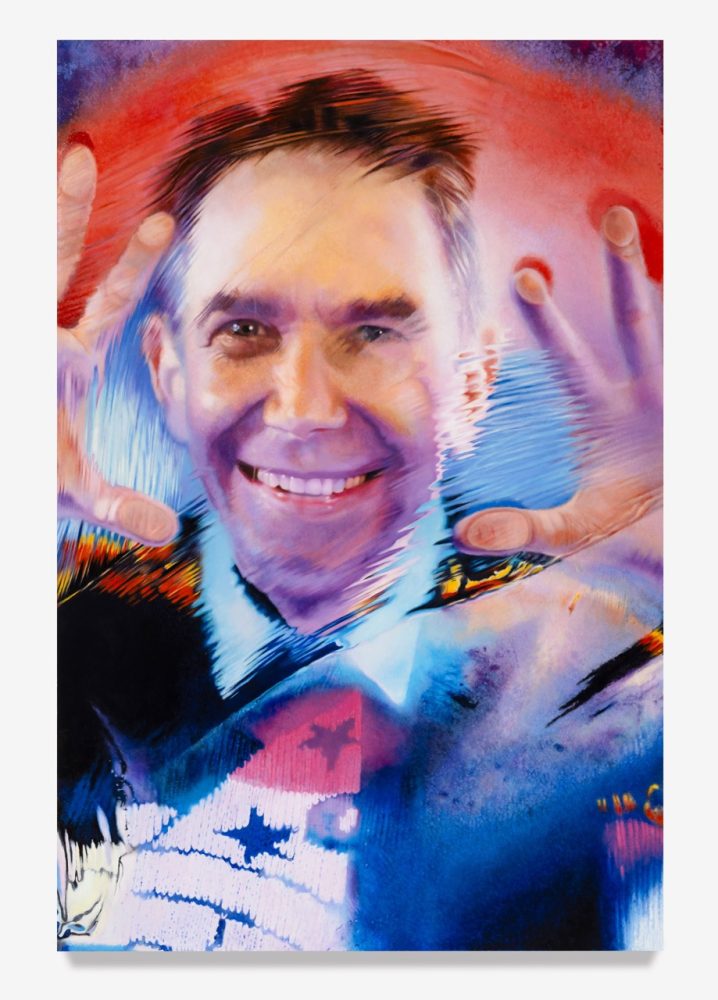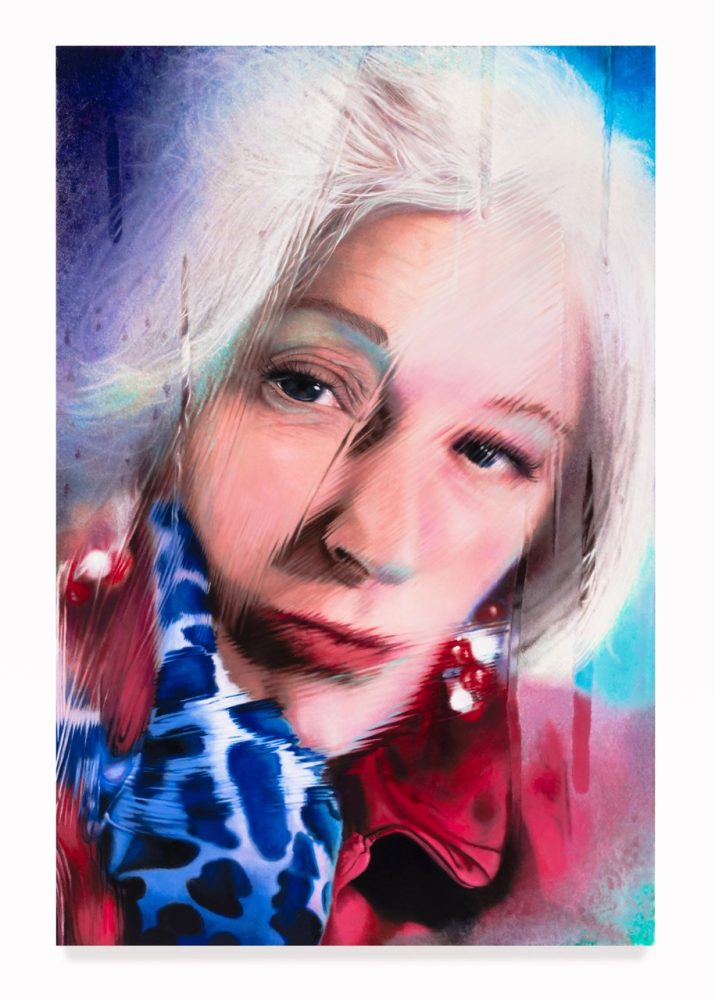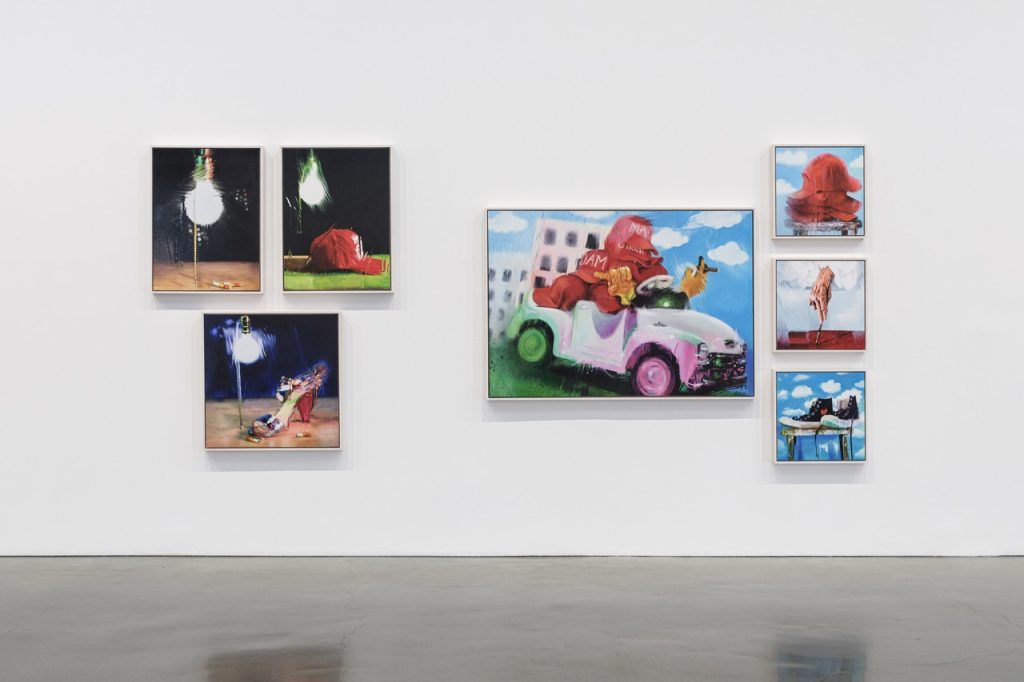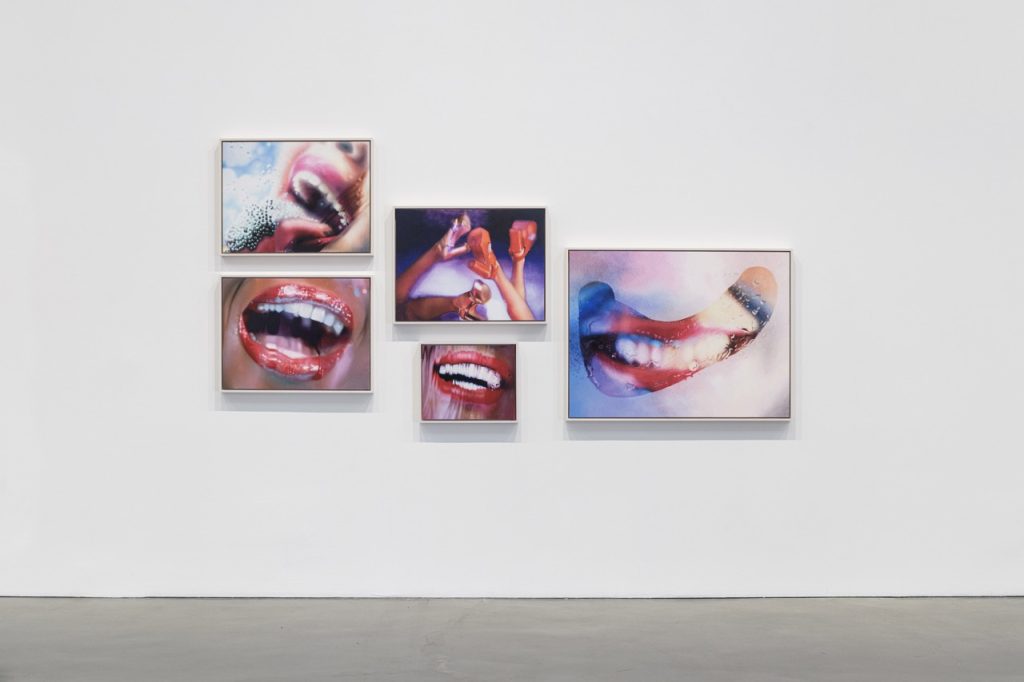
- Marilyn Minter, Lizzo Odalisque, 2023–2025, Enamel on metal Artwork, Dimensions: 60 x 96 x 2 inches (152.4 x 243.8 x 5.1 cm) MM 801 © Marilyn Minter Courtesy the artist and Regen Projects, Los Angeles.
Regen Projects opens its doors once again to the unmistakable shimmer and bite of Marilyn Minter, one of America’s most daring and seductive painters. On view until December 20, 2025, the exhibition marks Minter’s fourth solo show with the gallery and brings together four interwoven bodies of work—large-scale portraits, the Odalisque and After Guston series, and her signature close-ups of glittering mouths. The result is a subversive feast: a body of work that dismantles the hierarchies of art history while luxuriating in its surfaces.
Minter, known for her hyperreal enamel paintings that oscillate between glamour and grime, turns her lens this time toward icons Nick Cave, Jane Fonda, Cindy Sherman, and Jeff Koons. Rendered with a crystalline precision that feels almost devotional. Yet beneath the glossy finish lies a defiant looseness. Sherman, the eternal shape-shifter, is identified by a single leopard-print glove; Fonda glows with the heat of a life lived in protest; Cave dances mid-frame; and Koons, with manic energy, presses up against the picture plane as if trying to escape it. Each portrait pulses with a kind of friction. A space between polish and play, control and chaos.
- Installation view, Regen Projects Los Angeles © Marilyn Minter – Photo: Evan Bedford Courtesy the artist and Regen Projects, Los Angeles.
- Installation view, Regen Projects Los Angeles © Marilyn Minter – Photo: Evan Bedford Courtesy the artist and Regen Projects, Los Angeles.
The exhibition’s Odalisque series takes this tension to a more explicitly political space. The odalisque, that perennial art-historical fantasy of the reclining nude, is recast through the lens of Lizzo and Padma Lakshmi, women who are not muses but authors of their own image. In Lizzo Odalisque (2023–25), the pop star reclines in heels and lingerie, iPhone in hand, her YITTY logo gleaming from a heavy gold chain. The device replaces the mirror or fan of classical compositions, signaling self-ownership and digital agency in the age of the selfie. Lakshmi, meanwhile, sits upright, biting into an orange amid a decadent still life of fruit and smashed cake along with a tableau that collapses centuries of art history into one assertive, delicious gesture.
If the portraits speak of interpersonal intimacy, Minter’s After Guston series turns toward artistic kinship. Here, she engages directly with the ghost of Philip Guston, incorporating his recurring motifs; from cigarettes, lightbulbs, and hoods into her own visual language of mouths and shoes. The result is both homage and confrontation. Minter draws a chilling parallel between Guston’s hooded figures and the contemporary iconography of MAGA red caps: bulbous, wordless symbols of extremism that, like Guston’s hoods, render hate as absurd and omnipresent.
- Marilyn Minter, Padma Odalisque, 2024, Enamel on metal, Artwork Dimensions: 96 x 60 x 1 inches (243.8 x 152.4 x 2.5 cm) © Marilyn Minter Courtesy the artist and Regen Projects, Los Angeles.
- Marilyn Minter, Jane Fonda, 2024, Enamel on metal, Artwork Dimensions: 72 x 48 x 2 inches (182.9 x 121.9 x 5.1 cm) © Marilyn Minter Courtesy the artist and Regen Projects, Los Angeles.
- Marilyn Minter, Jeff Koons, 2024, Enamel on metal, Artwork Dimensions: 72 x 48 x 2 inches (182.9 x 121.9 x 5.1 cm) © Marilyn Minter Courtesy the artist and Regen Projects, Los Angeles.
- Marilyn Minter, Cindy Sherman, 2024, Enamel on metal, Artwork Dimensions: 72 x 48 x 2 inches (182.9 x 121.9 x 5.1 cm) MM 824 © Marilyn Minter Courtesy the artist and Regen Projects, Los Angeles.
Through these paintings, Minter is not just revisiting art history, she’s rewriting its grammar. She collapses distinctions between high and low, glamour and critique, seduction and subversion. Her surfaces may glisten, but they’re never passive. Like her subjects, they demand to be seen on their own terms.
Born in Shreveport, Louisiana in 1948, Minter has spent decades perfecting her singular process and dismantling cultural binaries with a sly, feminist wit. Her résumé reads like a who’s who of contemporary art institutions, from the MoMA to the Tate Modern, the Guggenheim, and the Brooklyn Museum, and her accolades, including the 2025 Tribeca Festival x CHANEL Artist Award, attest to her enduring relevance.
- Installation view, Regen Projects Los Angeles © Marilyn Minter – Photo: Evan Bedford Courtesy the artist and Regen Projects, Los Angeles.
- Installation view, Regen Projects Los Angeles © Marilyn Minter – Photo: Evan Bedford Courtesy the artist and Regen Projects, Los Angeles.
- Marilyn Minter, After Guston, #29 (Car), 2025, Enamel on metal, Framed Dimensions: 43 5/8 x 61 1/2 x 2 5/8 inches (110.8 x 156.2 x 6.7 cm) Artwork Dimensions: 42 x 60 x 2 inches (106.7 x 152.4 x 5.1 cm) © Marilyn Minter Courtesy the artist and Regen Projects, Los Angeles.



